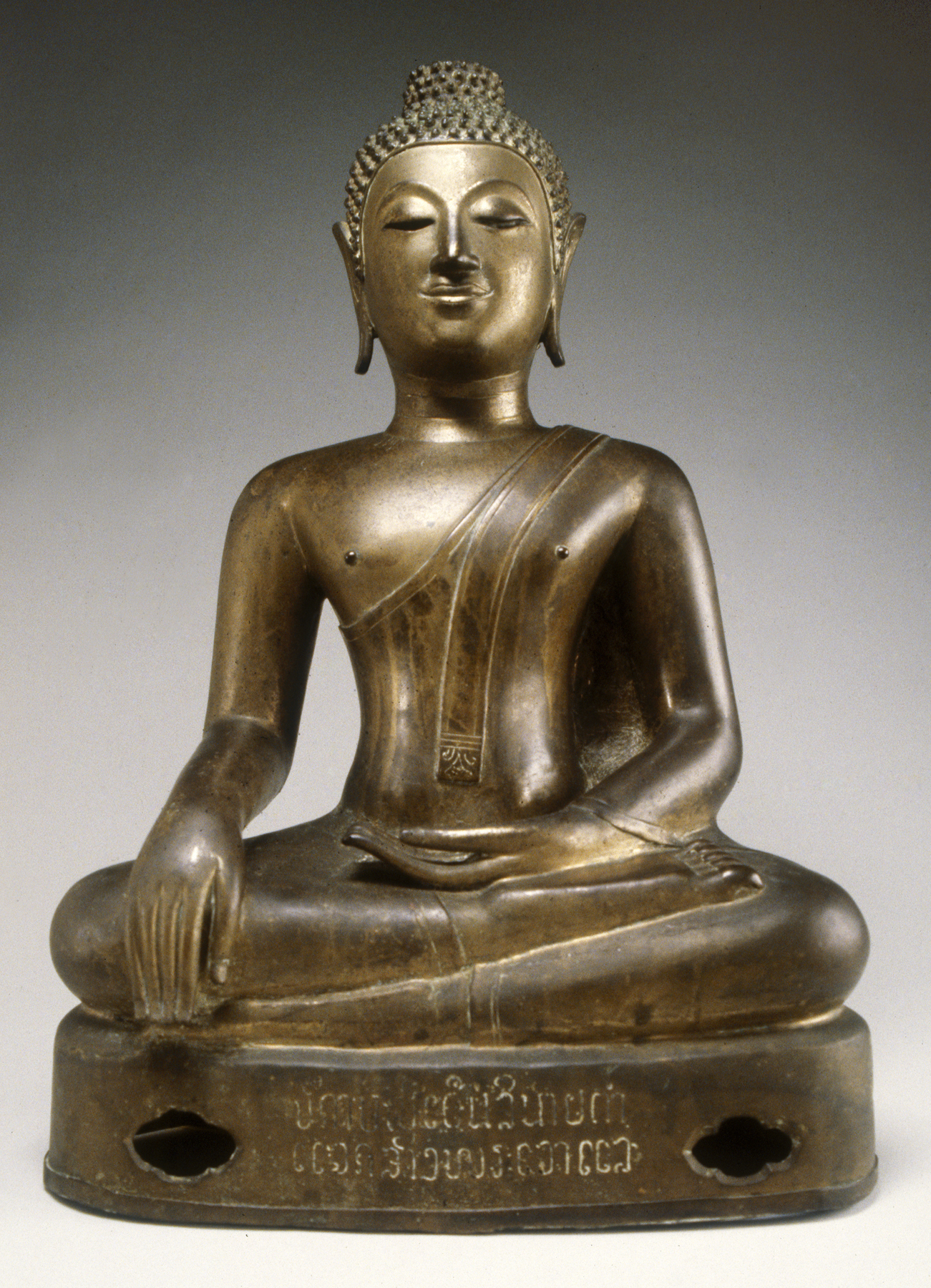Seated Buddha in "Maravijaya"
(Southeast Asia )
Lan Na Buddha images can be looked at in two ways: in terms of types (Sihing or non-Sihing) or modes and in terms of stylistic qualities. But in fact these two approaches overlap to a certain degree. This image is not a Sihing: the legs lie on top of one another, the right hand rests left of the knee, the mantle is long, and the original radiance surely had the form of a flame. But it also differs from a Sihing-type image because of the absence of certain stylistic features, such as an undulant swelling body and vigorously curved fingers. Even the mouth is controlled to the point of primness. These qualities nevertheless manage to endow the image with a certain personality, as if inside there were a more vigorously modeled sculpture trying to get out.
The date in the inscription can be interpreted as 1494, 1554, 1614, and so forth. (The term "kap yi" combines a marker repeating every ten years with one repeating every twelve years).
Inscription
Provenance
Provenance (from the French provenir, 'to come from/forth') is the chronology of the ownership, custody, or location of a historical object. Learn more about provenance at the Walters.
Dr. Carthew, Bangkok; Alexander B. Griswold, Monkton, June 1949, [presented to the Breezewood Foundation, 1965, inv. no. 548]; Walters Art Museum, 1992, by bequest.
Exhibitions
| 1995 | Unearthly Elegance: Buddhist Art from the Griswold Collection. The Walters Art Gallery, Baltimore. |
Geographies
Thailand (Lan Na) (Place of Origin)
Measurements
at knees: 24 1/2 x 14 9/16 in. (62.2 x 37 cm)
Credit Line
Bequest of A. B. Griswold, 1992
Location in Museum
Not on view
Accession Number
In libraries, galleries, museums, and archives, an accession number is a unique identifier assigned to each object in the collection.
In libraries, galleries, museums, and archives, an accession number is a unique identifier assigned to each object in the collection.
54.2746


